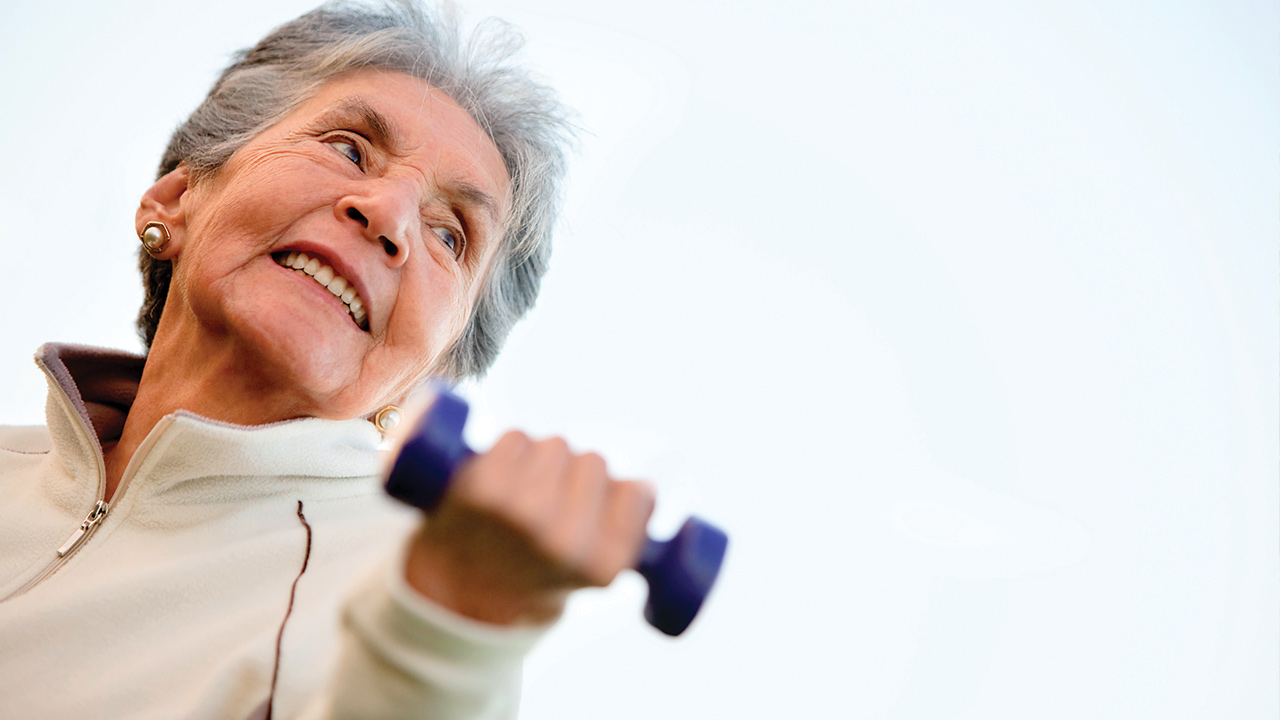As we age, we often develop new health conditions, begin taking more medications and lose muscle mass. The threat of an injury-inducing fall weighs heavily on the minds of many older adults and their caregivers—and for good reason. Falls account for more than 95 percent of hip fractures, which can have a devastating and often permanent impact on an elder’s physical and mental health.
Fortunately, practicing a few gentle at-home exercises on a regular basis can help seniors enhance their strength, balance and coordination and decrease their risk of falling. Best of all, caregivers and seniors can perform these moves together to safeguard their mobility and prevent accidents.
The Benefits of Senior Balance Exercises
Research shows that the benefits of balance- and strength-enhancing exercises actually extend beyond fall prevention. A study published in The BMJ concluded that physical activity programs also help protect against even the most severe fall-related injuries. In other words, if a senior engages in a balance-enhancing exercise program and still winds up falling, their risk of being injured is reduced by as much as 61 percent.
“Many of the risk factors for falls and fall-induced injuries are similar,” explain study authors. “These factors are correctable by well-designed exercise programs, even in the very old and frail.”
One of the main ways exercise helps is by strengthening an individual’s bones as well as the muscles that protect them. Additional benefits include improved reaction time, coordination and cognitive function.
Study authors tout the importance of multi-component exercise programs for seniors to prevent falls and fall-related injuries. A well-rounded physical activity regimen emphasizes balance training, gait and functional training, strengthening exercises, flexibility and endurance. Tai Chi, yoga, weight training, aerobics, walking, cycling and swimming can all be modified to meet one’s unique needs and abilities and incorporated into a fall prevention exercise program for the elderly.
At-Home Balance Exercises for Seniors
The following movements should be done next to another person serving as a spotter or a sturdy chair/handrail that can be used for balance in case you or your loved one becomes unsteady. Avoid engaging in any exercises that seem overly challenging for either of you, unless a doctor has given their prior approval.
Tightrope Walk
Just like a tightrope walker in a circus, this exercise involves holding your arms straight out from your sides, parallel to the floor. With your arms out, walk in a straight line, pausing for one or two seconds each time you lift your back leg off the ground. Take between 15 and 20 steps this way. While walking, keep your head straight and look at a fixed spot in front of you to help maintain balance.Rock the Boat
For this exercise, begin by placing your feet hip-width apart. Make sure that each foot feels like it’s pressing into the ground with the same amount of force. This will ensure that your weight is evenly distributed across both legs. With your shoulders back and head level, slowly transfer your weight to one side, lifting the opposite foot off the ground a few inches. Hold your leg up for as long as you can, but no longer than 30 seconds. Then, slowly transfer your weight back onto both feet and repeat the process on the opposite side. Aim to repeat this process five times on each side initially and work up to more repetitions as balance and strength improve.Heel-Toe Walk
This exercise involves placing one foot directly in front of the other so that the heel of your front foot and the toes of your back foot are touching with each step. Depending on your level of flexibility, you may not be able to get your heels and toes to completely touch, but that’s fine. Just try to get them as close as you can without any discomfort. Take between 15 and 20 steps this way. As with the tightrope walk, keeping your eyes fixed on a point in front of you will help you remain stable.Flamingo Stand
This one is pretty simple. While holding onto the back of a chair for stability, stand on one leg with the other leg extended out in front of you a few inches from the ground. Start off standing on one leg for ten seconds, and then repeat on the other leg. Aim to repeat this on each leg five to ten times. You and your loved one may find that it’s less taxing to stand on one leg than the other, but this is normal. Just continue exercising both sides equally to help build strength and confidence on the weaker side. It’s important to maintain good posture (keep your shoulders back, your back straight and your head up) while doing this exercise.
Starting out with these simple exercises can provide an excellent foundation for other strength- and balance-building fitness routines like Tai Chi, gentle yoga, water aerobics and much more. If a formal fitness program isn’t a good fit, consider something like the Lifestyle-Integrated Functional Exercise (LiFE) Program to prevent falls. The LiFE Program incorporates strength and balance exercises similar to the ones above into everyday activities so there’s no need to dedicate time for working out. Regardless of what type of fitness regimen works best for you and your loved one, just be sure to clear any new physical activities with a physician and avoid overexerting yourselves in the beginning.
